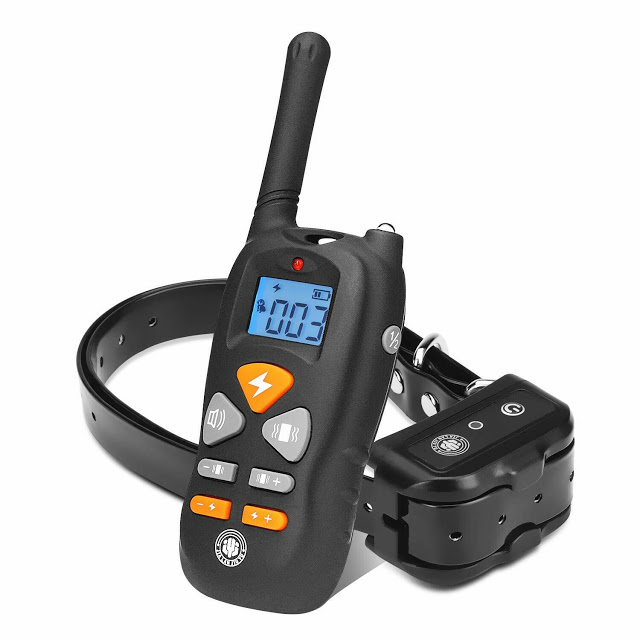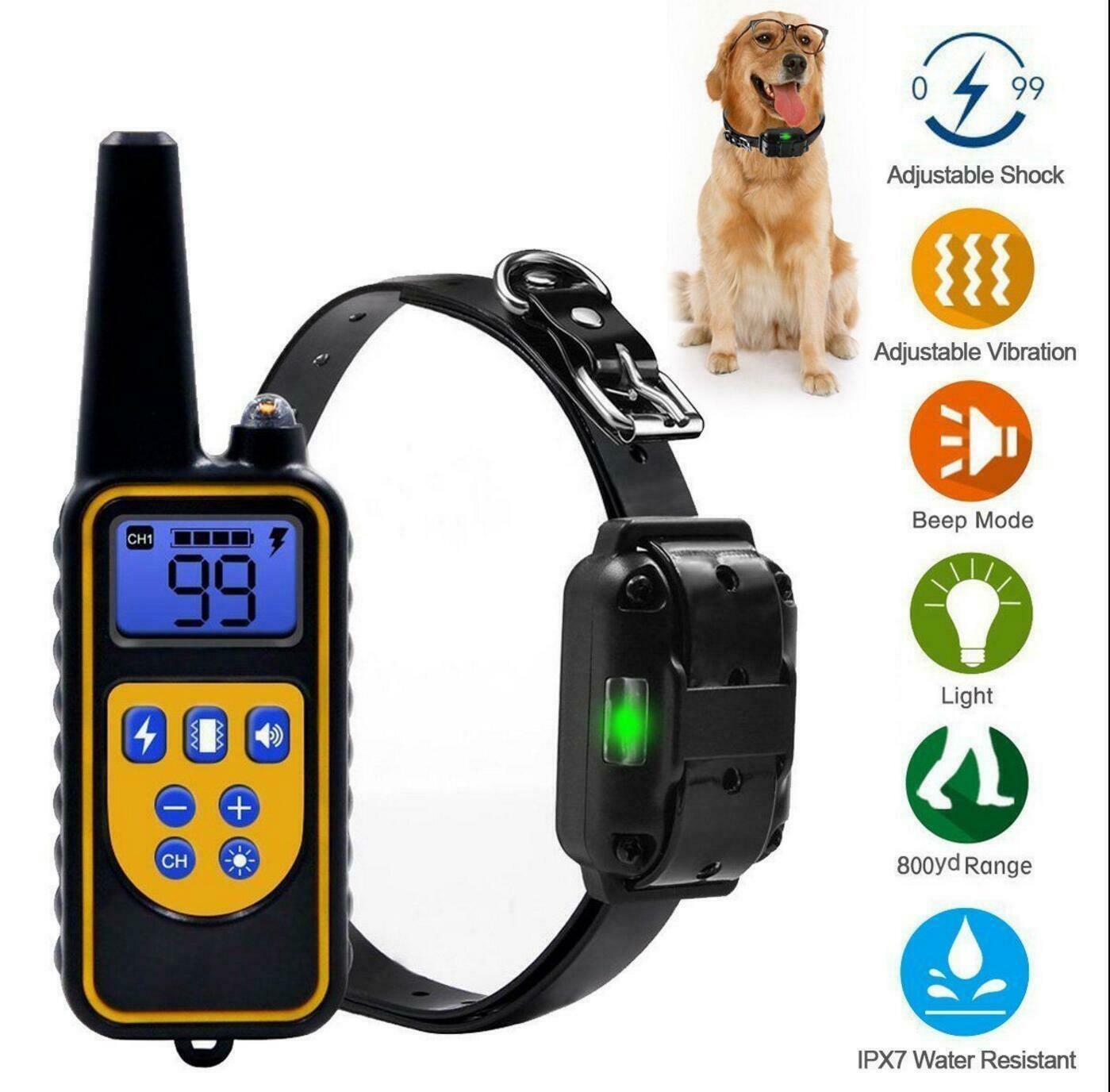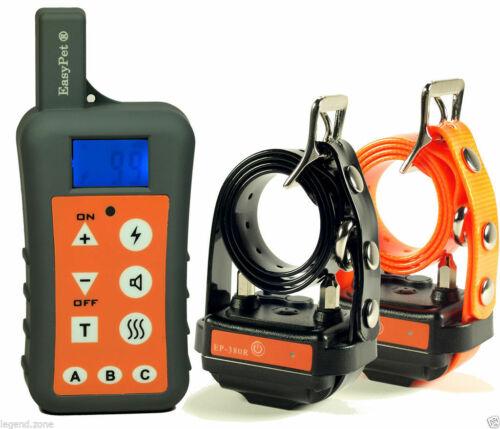Positive Reinforcement Dog Training Techniques & Alternatives To Shock Collars For Dogs
Are you considering using an electric shock collar for training your dog, but feeling unsure about whether it is the right choice? The debate over the use of e-collars has been ongoing for years, with strong opinions on both sides of the issue.
We will explore the pros and cons of using e-collars, discuss alternatives to electric shock training, and offer guidance on how to make the best decision for your pet's well-being. By the end of this article, you will have a detailed understanding of electric shock collars and be equipped to make a responsible choice when it comes to training your dog.
ToC
E-collars deliver a mild electric shock to a dog as a form of behavior correction. They are controversial tools in dog training, with debates centered around their ethical implications and effectiveness.
Pro & Cons
Potential Benefits:
- Immediate Correction: Offers instant feedback to the dog, potentially stopping dangerous behaviors quickly.
- Distance Correction: Useful in correcting behaviors at a distance when the dog is not close to the handler.
- Adjustable Intensity: Modern e-collars offer varying levels of intensity that can be adjusted to the minimum necessary.
Drawbacks and Concerns:
- Risk of Physical Harm: Incorrect use can lead to physical injury or discomfort.
- Psychological Stress: Can cause anxiety, fear, or aggression, undermining trust between the dog and the owner.
- Dependence: Dogs may only respond when the collar is on, not addressing the root cause of the behavior.
- Overuse: There's a risk of over-relying on the collar and neglecting other training methods.
Alternative Training Methods
Clicker Training
- Mechanism: The clicker acts as a conditioned reinforcer, a neutral signal that becomes meaningful to the dog through association with rewards.
- Application: It's used for teaching new behaviors and refining existing ones, making it clear and precise for the dog what action earned the reward.
Behavioral Adjustment Training (BAT)
BAT focuses on giving dogs "functional rewards" for good behavior, such as space from a feared stimulus, which helps in reducing aggression and fear.- Principle: It's based on the idea that rewarding the dog for calm behavior in the presence of triggers (such as other dogs or strangers) teaches them that these situations are not threatening.
- Process: The dog is exposed to the trigger at a distance where they notice it but do not react aggressively or fearfully; then, they are rewarded for calm behavior.
Relationship-Based Training
This method emphasizes the relationship between the dog and the owner, focusing on mutual respect and understanding rather than dominance.- Approach: It involves understanding the dog’s body language, learning their emotional state, and adjusting the training accordingly.
- Benefit: Builds a stronger bond between the dog and its owner, making the dog more receptive to training and learning.
Positive Reinforcement Techniques
Immediate RewardThe timing of rewards is crucial in positive reinforcement. Rewards should be given immediately after the desired behavior to reinforce the connection between the behavior and the reward.
Importance: Immediate rewards help the dog understand which behavior is being rewarded, increasing the likelihood of the behavior being repeated.
Consistency in rewarding desired behaviors ensures that the dog understands what actions are expected of them.
Strategy: Use a consistent command and reward system for specific behaviors to avoid confusion and reinforce learning.
Examples: Alternating between treats, praise, toys, and play can keep the dog motivated and interested in training.
Positive Reinforcement: Rewards desired behaviors with treats, praise, or play, encouraging the dog to repeat those behaviors.
Clicker Training: Uses a clicker to mark the exact moment a desired behavior is performed, followed by a reward.
Behavioral Adjustment Training (BAT) focuses on modifying the dog's emotional response to stimuli, reducing undesired behaviors through socialization and desensitization.
- Consistency: Always reward desired behaviors to reinforce learning.
- Timing: Immediate rewards help the dog associate the action with the reward.
- Variety of Rewards: Utilize a range of rewards to sustain interest and motivation.
Ethical Considerations
The use of e-collars is banned or restricted in several countries due to ethical concerns. Many professionals argue that training based on fear or pain can damage the relationship between a dog and its owner.Understanding Dog Behavior and Body Language
Successful training requires understanding a (getButton) #color=(#de1738) #text=(dog's body language) and behavior. Recognizing signs of stress, fear, or excitement can help tailor training methods to the individual dog, improving effectiveness.Consistency and Patience
Patience and consistency are crucial in dog training. Changing behavior takes time, and consistent application of the chosen training method is necessary for success.Resources for Positive Reinforcement Training
- Books: "Don't Shoot the Dog!" by Karen Pryor and "The Power of Positive Dog Training" by Pat Miller offer excellent insights into positive reinforcement techniques.
- Online Courses: Websites like Fenzi Dog Sports Academy offer courses on positive reinforcement training.
- Professional Help: Consider hiring a certified professional dog trainer who uses positive reinforcement methods.
Recommended e-Collar for Dogs
| Text / Content | Image |
|---|---|
Shock Training Collar for Dogs, IP67 Waterproof with 1800FT Remote Beep/Vibration/Shock
NO HURT DOG TRAINING COLLAR |

|
Rechargeable 2600 FT LCD Remote Dog Shock Training Collar Waterproof
✔ With a remote control range of up to 2600ft (875 yards), this dog shock collar allows for easy training in the park or backyard, eliminating the worry of your dog running too far away. The built-in LED light of the receiver will also help you locate your dog even in a dark environment. |

|
1200m Waterproof IP67 Rechargeable Dog Training Shock Collar for 2 DogsAn IP67 depth waterproof remote control dog training collar, the receiver is equipped with silicone conductive columns for more security. The remote control has a distance of 880 yards. Remote control function keys are separated, allowing each function to be directly activated with a button, making operation easy. |

|
🐾 Join Our Community!
Are you a dog lover? 🐶 Connect with fellow pet enthusiasts, share tips, and get expert advice!
Visit Us on Facebook & Join Us!Conclusion
While e-collars can offer a quick fix in some scenarios, the potential risks and ethical concerns make them a controversial choice. Alternative methods, such as positive reinforcement, provide a humane and practical approach to training, fostering a trusting and respectful relationship between dogs and their owners.(getButton) #text=(Dog Behavior Problems) #icon=(link) #color=(#8134af) (getButton) #text=(How to Use E-Collars for Dogs Without Stress) #icon=(link) #color=(#348498) (getButton) #text=(Socializing Your Dog: Don’t Skip This Vital Step!) #icon=(link) #color=(#2339bd) (getButton) #text=(Steps to Train Your Stubborn Dog) #icon=(link) #color=(#dd2a7b)


.webp)
